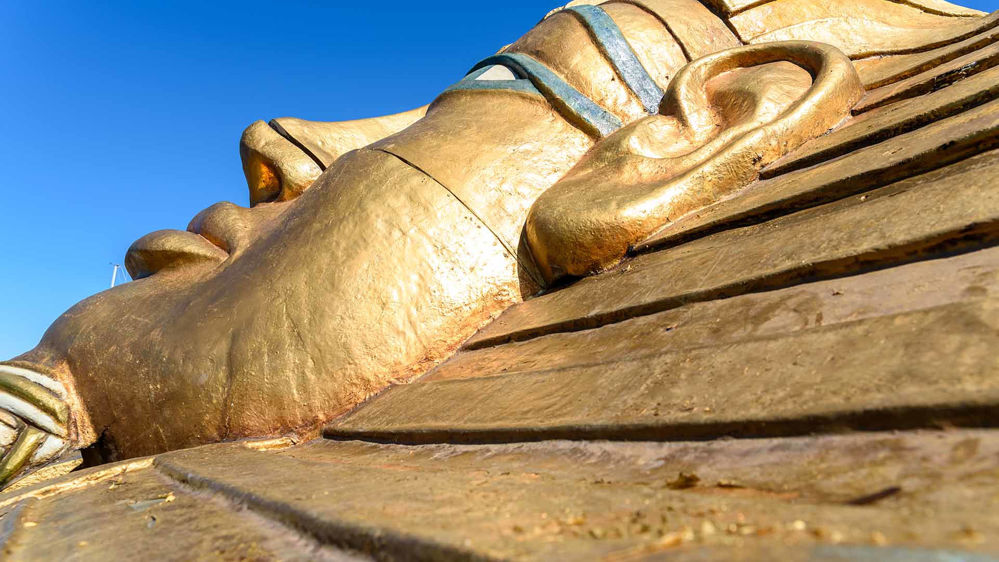
Gold has been a highly sought-after commodity since the dawn of human civilization. Its rarity, beauty, and malleability have made it valuable and versatile, and it has been used for a wide range of purposes, from currency and jewelry to religious artifacts and decorative objects. In this article, we will explore the discovery and use of gold in several ancient civilizations, examining its impact on their development and culture.
The discovery and mining of gold
Gold was first discovered in ancient Egypt around 4,500 years ago. The Egyptians found gold deposits in the Nile River, and soon after, began mining the metal in the desert regions of Egypt. The gold mined in ancient Egypt was used to make jewelry, decorative objects, and even royal masks.
The Greeks and Romans also mined gold, with the Romans being particularly successful in their mining efforts. They developed advanced techniques for mining, including the use of hydraulic mining, which allowed them to extract gold from deeper and more inaccessible deposits.
In South America, the Incas mined gold from the Andes mountains, which provided a significant portion of the gold that was used in their jewelry and religious artifacts. In ancient China, gold was mined from rivers and streams, as well as from deep mines in the mountains.
The impact of gold on trade and the economy
The discovery and mining of gold had a significant impact on trade and the economy in ancient civilizations. Gold was highly valued and was used as currency in many civilizations, including ancient Egypt, Greece, and Rome. The use of gold coins as currency allowed for trade to occur more easily, facilitating the growth of the economy.
In addition to its use as currency, gold was also used in trade as a commodity. Its rarity and beauty made it highly desirable, and it was often used in trade to acquire other valuable commodities. The trade in gold helped to foster economic growth and development in many ancient civilizations.
The impact of gold on art and culture
The use of gold in art and culture was another important aspect of its impact on ancient civilizations. Gold was used to make jewelry, decorative objects, and even religious artifacts, and it was often associated with the divine and the supernatural.
The use of gold in art and decoration allowed for the development of new styles and techniques, as well as the preservation of ancient culture and traditions. Many of the most iconic works of art from ancient civilizations, such as the death mask of Tutankhamun and the gold diadems of the Incas, were made using gold.
Ancient Egypt
Gold has been mined in Egypt for over 5,000 years, making it one of the oldest sources of the metal in the world. The ancient Egyptians were particularly fascinated by gold and believed that it had magical properties. Gold was used to make jewelry, decorative objects, and even royal masks. The Egyptians also used gold as currency, with its value being based on weight. Gold was also used in religious ceremonies, and it was believed to have the power to bring good fortune and protect the wearer.
Ancient Greece
The ancient Greeks were also fascinated by gold, and they believed that it was a symbol of the sun god, Apollo. They used gold to make coins, jewelry, and decorative objects. The Greeks believed that gold was associated with light, beauty, and power, and it was used to create some of the most iconic works of art in history. The use of gold coins as currency was an important development in ancient Greece, as it allowed for trade to occur more easily, facilitating the growth of the economy.
Ancient Rome
The Romans also valued gold, using it to make coins and jewelry. They believed that gold was a symbol of power, and it was often used to reward soldiers and generals for their bravery in battle. The Roman Empire was known for its extensive mining operations, and they developed advanced techniques for mining gold, including hydraulic mining.
This allowed them to extract gold from deeper and more inaccessible deposits. The Romans also used gold in their architecture, often covering buildings with gold leaf to create a sense of opulence and grandeur.
South America
In South America, the Incas were one of the most successful civilizations in mining gold. They mined gold from the Andes mountains, which provided a significant portion of the gold that was used in their jewelry and religious artifacts. Gold was highly valued by the Incas and was believed to have spiritual properties. They believed that gold was the sweat of the sun and that it had the power to bring good fortune and protection.
China
Gold has been mined in China for thousands of years, with records dating back to the 7th century BC. Gold was often mined from rivers and streams, as well as from deep mines in the mountains. Gold was highly valued in China and was used to make coins, jewelry, and decorative objects. The use of gold coins as currency allowed for trade to occur more easily, and it facilitated the growth of the economy. The Chinese also believed that gold had spiritual properties and used it in religious ceremonies.
Conclusion
The discovery and use of gold in ancient civilizations had a profound impact on their development and culture. The rarity and beauty of gold made it highly valued and sought-after, and its use as currency and in trade allowed for the growth of the economy. The use of gold in art and decoration allowed for the development of new styles and techniques and the preservation of ancient culture and traditions. Today, gold continues to be a highly valued commodity, and its significance and impact on human history continue to be studied and explored. The discovery and mining of gold have come a long way since ancient times, and modern technologies have allowed for more efficient and effective mining practices. Nonetheless, the legacy of gold in ancient civilizations continues to be felt and studied, and the fascination with the metal remains strong to this day.
Author: Pooyan Ghamari, Economist Visionary and Specialist in Gold and Banking
Pooyan Ghamari is a Swiss economist and expert in high-tech technology, with a particular focus on the gold sector. He has extensive experience in the fields of artificial intelligence (AI), machine learning, and data analytics, and has worked with a range of organizations in the gold sector.
Ghamari is a thought leader in the field of AI and has published numerous articles and papers on the subject, specifically in relation to its application in the gold sector. He is particularly interested in the ethical and social implications of AI in gold mining, and is committed to advancing the responsible and ethical use of these technologies in the sector.
Ghamari is also a recognized expert in the field of high-tech technology and has advised a range of companies and organizations in the gold sector on how to harness the power of technology to drive innovation and growth. He is passionate about helping businesses and individuals in the gold sector leverage technology to achieve their goals and is a frequent speaker at conferences and events.
In addition to his work in AI and high-tech technology in the gold sector, Ghamari is also a committed advocate for social justice and human rights. He believes that technology can play a powerful role in promoting social change in the gold sector and is dedicated to using his expertise to make a positive impact in the world.
Overall, Pooyan Ghamari is a highly respected and influential figure in the fields of AI, high-tech technology, and the gold sector. His insights and expertise are highly valued by organizations and individuals in the sector, and his work has helped to shape the development and deployment of technology in a way that is both responsible and ethical.


